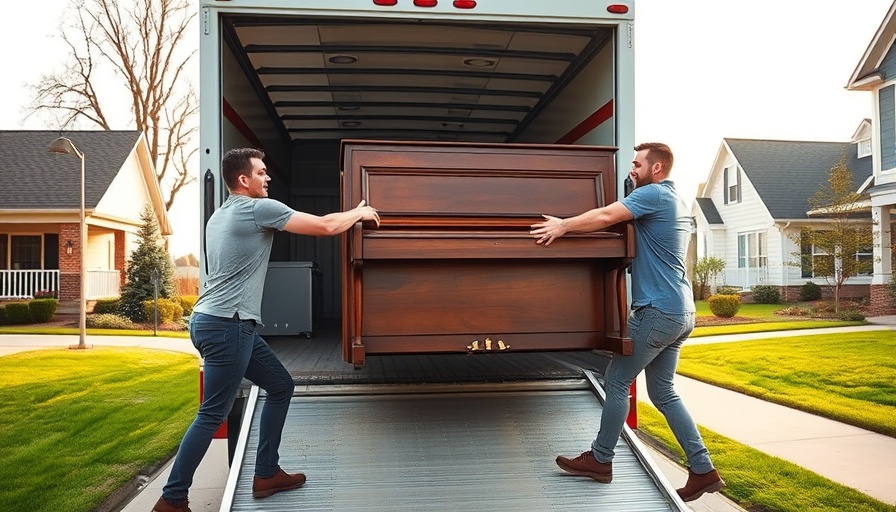
Understanding the Challenges of Piano Moving
Moving a piano is not just about lifting a heavy object; it requires careful planning, specialized skills, and the right equipment. The delicate craftsmanship of a piano makes it a high-risk item for damage during a move. Moreover, the weight and size can lead to potential injury if not handled properly. Small business owners and managers should be aware that while it may seem straightforward, the process is fraught with challenges that can disrupt operations.
Estimating the Cost of Moving a Piano
Cost is often a primary consideration when moving any substantial item. On average, hiring professional movers to transport a piano can range from $200 to $1,000 depending on various factors such as the type of piano, distance, and accessibility of the location. Understanding these costs upfront can help businesses plan better, especially when budgeting for relocation expenses.
The Process of Moving a Piano: A Step-by-Step Guide
Involving professionals is crucial in the moving process. Here’s a breakdown of essential steps:
- Assessment: Evaluate the current and new locations for accessibility and stairs.
- Preparation: Ensure that pianos are properly prepared by removing items such as sheet music or loose parts.
- Equipment: Use specialized moving equipment like piano dollies, ramps, and straps to secure the instrument.
- Moving: Typically, it’s best to have at least two professional movers to help carry and maneuver the piano safely.
- Placement: Once at the new location, place the piano in a suitable space and ensure it is stable.
Following these steps reduces risk and damage, providing a smoother transition.
Why Professional Help is Essential
Choosing to hire professional movers goes beyond convenience; it entails a layer of expertise that can prevent costly mistakes. Trained experts not only understand the logistics of moving pianos but are also equipped to handle unexpected challenges. This factor becomes increasingly important for small business owners looking to minimize downtime and protect their valuable assets.
DIY Piano Moving: Risks and Benefits
For those who find the costs of professional moving prohibitive, attempting a DIY piano move may seem attractive. However, it’s essential to consider the risks involved. Injuries to oneself or damage to the piano and property could result in far higher costs than hiring professionals. Balancing the benefits against risks is crucial; sometimes penny-pinchers may end up spending more in the long run. Assessing the viability of moving a piano by yourself against hiring trained movers can influence business decisions significantly.
Common Misconceptions about Piano Moving
There are many myths surrounding piano moving that can lead to poor decisions. One common belief is that all movers can handle pianos, which isn’t true. Not all moving companies have the expertise or equipment necessary to transport such delicate instruments effectively. Furthermore, some may underestimate the amount of time and manpower required, leading to stress and potentially damaging outcomes.
Tools and Techniques for a Successful Move
Investing in the right tools can significantly ease the piano moving process. Beyond basic moving equipment, using protective padding, specialized straps, and dollies designed for heavy loads can make a world of difference. Techniques such as wrapping and cushioning can protect pianos from scratches and dents, preserving their aesthetic appeal and functionality.
Conclusion: Making Informed Decisions
As you consider moving a piano for your business, weigh all options carefully. The complexities surrounding the process can lead to potential pitfalls, thus ensuring a smooth transition is vital. Ultimately, the investment in professional help or appropriate tools can safeguard both your instrument and your bottom line. For small business owners, understanding the nuances of piano moving is not just about logistics, but also about maintaining the integrity of valuable assets in the face of transition.
 Add Row
Add Row  Add
Add 




Write A Comment